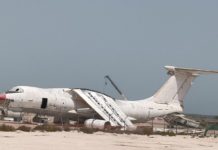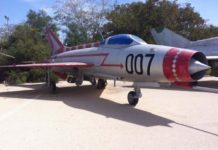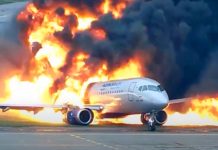All flights Marines were asked to pause 24 hours after three bad accidents that occur on their fighter jets
The head of Marine Corps aviation has ordered all non-deployed aircraft to stand down for 24 hours following three recent F/A-18 crashes, two of which were fatal.
Lt. Gen. Jon Davis told wing commanders on Wednesday that non-deployed squadrons must take “an operational pause” within the next seven business days, said Marine Corps spokeswoman Capt. Sarah Burns. The move is different than grounding aircraft, she said.
Commanders can decide which day to take the pause, during which aircraft are typically inspected, Burns said.
She could not say what specifically prompted Davis’ decision, which was approved by Marine Commandant Gen. Robert Neller.
Three Marine Corps F/A-18s have crashed in the last two months. Marine Capt. Jeff Kuss, a Blue Angels pilot, was killed on June 2 when his Hornet crashed shortly after takeoff in Smyrna, Tennessee. On July 28, Marine Maj. Richard Norton, a graduate of the Navy’s TOPGUN school, was killed when his F/A-18C crashed near Marine Air Ground Combat Center Twentynine Palms, California.
Then on Tuesday, a Navy pilot safely ejected from an F/A-18C that was on loan from the Marine Corps. The Hornet went down near Naval Air Station Fallon, Nevada.
Marine Corps aviation is suffering from a perfect storm that has caused the number of flyable aircraft to plunge in the last five years. Budget cuts have postponed maintenance for aircraft that have been flown hard during 15 years of combat and led to a shortage of spare parts, especially for CH-53E Super Stallion helicopters.
The service is also in the process of transitioning to the F-35 joint strike fighter, but delays in the program have forced the service to fly its Hornets, AV-8B Harrier II jump jets and EA-6B Prowlers longer than anticipated.
At the Aug. 1 event, Davis was asked if Marine pilots’ lives were in danger as a result of the drop in flight hours.
“I do not think we’re unsafe, but we’re not as proficient as we should be,” he said. “We don’t let units fly that are unsafe.”
Davis added that he tracks all Marine squadrons’ weekly flight hours, noting that Norton’s unit, Marine Fighter Attack Squadron 232, was “doing OK.”
On Jan. 14, two CH-53E helicopters from Marine Heavy Helicopter Squadron 463 crashed off Hawaii, killing 12 Marines. Davis has said the CH-53E helicopter crews had enough training for the mission they were doing, but they probably needed more training before they could fly in combat.
“We don’t know what happened out there — I won’t know until that investigation that comes out,” he told reporters on July 6. “I grieve for every one of the families. That’s the hardest part for me. I’m the deputy commandant for aviation and I lost 12 great Marines. That’s what I think about every day.”
About four months before that crash, another CH-53E Super Stallion made a hard landing in North Carolina. One Marine was killed and 11 others injured. In May 2015, an MV-22B Osprey crashed in Hawaii, leaving two Marines dead and 20 more injured.
Marine aviation deaths hit a five-year high in September 2015.
Source: marinecorpstimes.com








